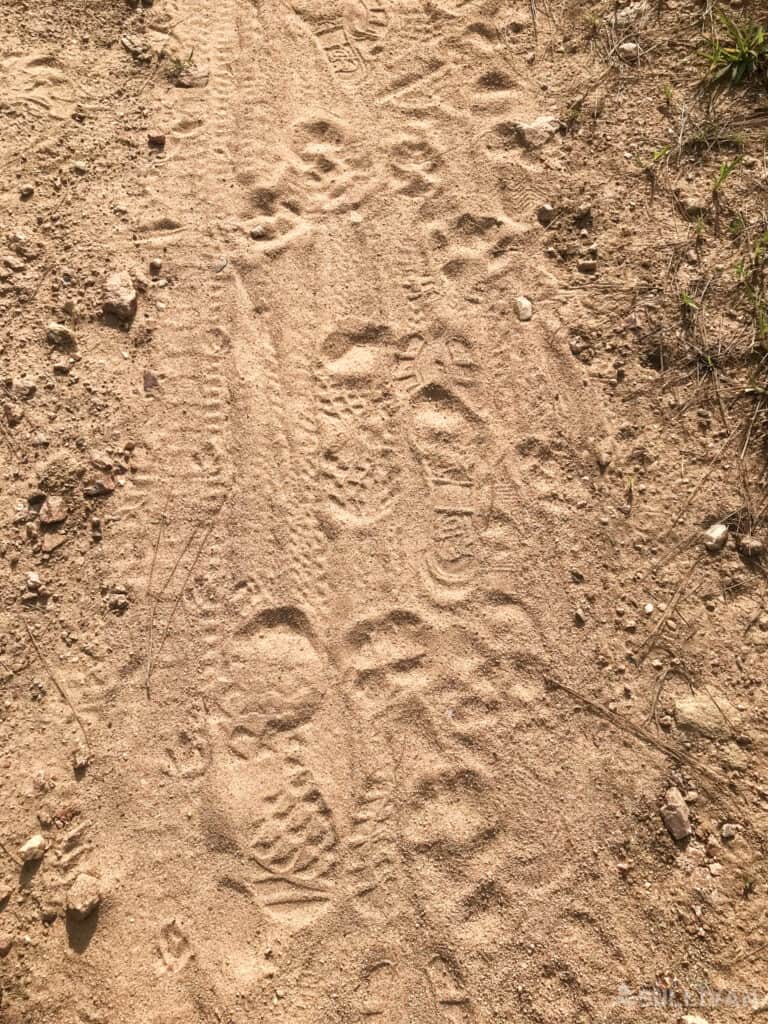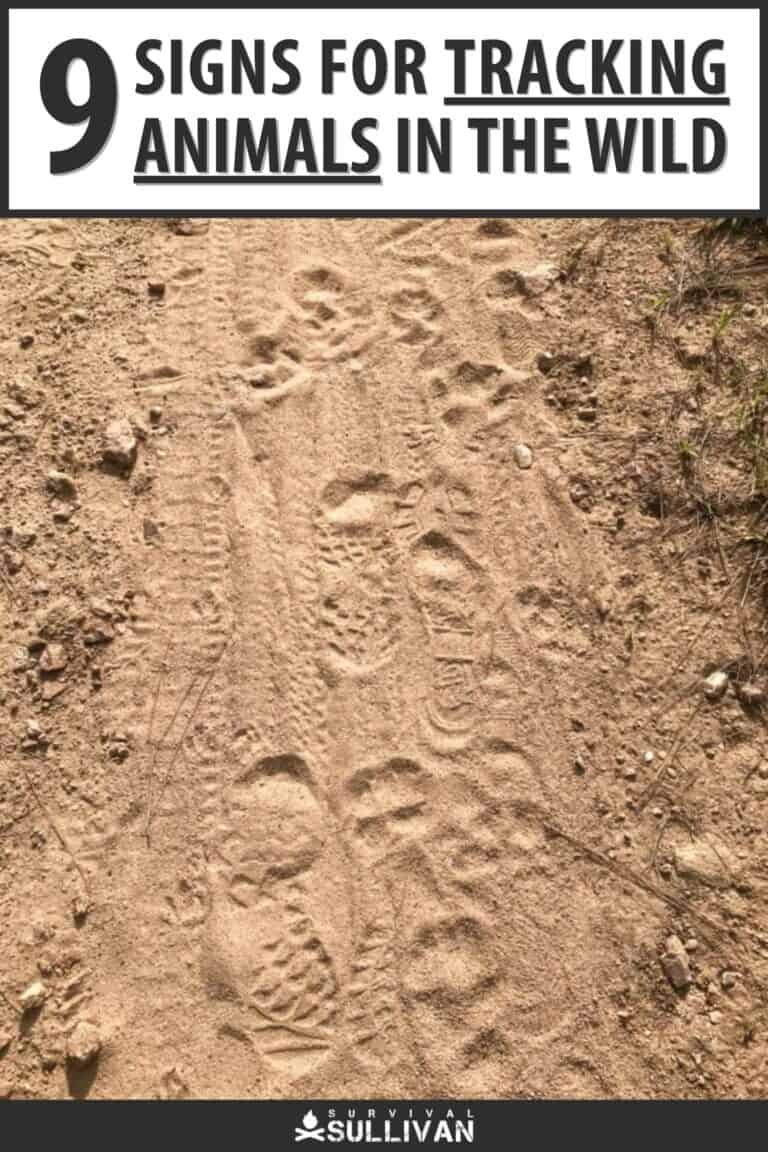
When you are out in the wilderness, whether you’re hunting, outdoor camping, or flat out enduring, learning how to find animals can be crucial to your success.
You may be out looking for them in the first place if you’re searching, or you might desperately require a source of food in a survival situation. Likewise, if you are out outdoor camping, preventing particular hazardous animals is critical for security.
 a number of human and animal tracks in sandy soil But the wilderness is a huge location, and identifying what is sharing the wilderness with you close by is extremely hard if you do not understand how to track.
a number of human and animal tracks in sandy soil But the wilderness is a huge location, and identifying what is sharing the wilderness with you close by is extremely hard if you do not understand how to track.
Tracking animals isn’t some acquired magical capability, it’s a survival ability that anybody can find out and establish. Basic to that skill is discovering to identify indications of animal existence.
I’ll get you begun with 9 signs that you need to always be alert for when hunting down or being cautious of animals.
1. Prints and Tracks
Prints and tracks are the most simple identifiers when tracking animals in the wild. They are particularly noticeable in soft surface such as mud, sand, or fresh snow where the imprint of an animal’s foot can be plainly seen.
This permits trackers to recognize not just the presence of an animal but usually the types and subspecies too; different animals have distinctively shaped footprints.
However, prints and tracks can be difficult and even difficult to spot on hard-packed terrain like rock or dry, compacted soil.
For that reason, discovering to identify numerous species from partial prints alone is a vital ability for any innovative tracker. This needs a keen eye, attention to information, and a much deeper understanding of the animals you are tracking.
2. Trails and Runs
While prints and tracks can offer direct evidence of an animal’s existence and heading, trails and runs offer more subtle, basic hints.
Trails are bigger courses that are normally used by multiple species of animals, and might appear as trampled yard, well worn-down dirt paths, or areas where plant life has been seriously disrupted or pressed back by repetitive passage.
On the other hand, runs are smaller, subtler courses used by a few species or even simply one.
These paths may be harder to identify and require mindful observation, and small runs left by rodents and reptiles are typically just seen when you’re down your stubborn belly in kind!
Paying very close attention to trails and runs can lead you directly to animals, though, making this an essential indication for trackers.
By keeping in mind the size, shape, and instructions of these courses, you can collect valuable info about an animal (or animals, plural) size, behavior, and the direction it has actually taken previously.
3. Nest and Bed Linen Areas
Each and every animal species has its own unique set of practices and preferences when it comes to picking or creating a place to rest or nest.
For instance, some animals may prefer to nest in anxieties in deep foliage or ground cover, while others may pick far-off places for better protection from predators.
Trees, burrows, caverns and other surface features can also act as most likely nesting sites depending on the types you’re tracking.
Likewise, numerous species show seasonal changes in their nesting and bed linen habits. This might be due to breeding seasons or changes in food availability and weather conditions.
Reviewing your knowledge about the specific species you’re tracking and other animals in the region will help you better analyze information when you find nests or bed linen areas.
4. Droppings
Although it is gross to the inexperienced, droppings can supply a wealth of information about the animal you’re tracking.
Different animals leave various kinds of droppings, each with a distinct shape, size, texture, and common contents. These differences can help recognize the types, along with provide ideas about the animal’s diet plan and health.
In addition, some animals use their droppings to mark area or leave sign with others of their kind.
Discovering fresh droppings can suggest that an animal has remained in the location just recently, while dry and desiccated turds suggests the creature left them a long period of time back.
Keeping a close eye out for droppings, and comprehending what they can tell you, is a high priority when tracking bigger animals.
5. Odor
In the world of animal tracking, you should not overlook your other senses in favor of sight alone. Your sense of odor can be a vital tool!
Animals produce or leave a range of distinctive smells that can serve as important indications of their existence.
The most apparent sources of these odors are feces and urine, with each species producing an unique variety of scents.
Aside from waste, some animals likewise release a distinct musk, a strong-smelling substance frequently produced by males for marking area, frightening rivals or bring in mates.
A fresh, clear smell lingering in the air can tell you a lot about the current activities of animals in the area.
For example, if you encounter an obvious odor near a bedding location, it may recommend that you just missed your quarry!
Training your nose to determine and translate these fragrances will definitely improve your tracking skills and increase your chances of effectively finding the animal you seek.
6. Fur
Another sometimes-obvious sign to look out for when tracking animals is little bits of fur or dropped feathers.
Animals shed either as part of their natural life processes, such as molting or due to seasonal changes when they require basically insulation from the aspects.
Injury or incidental contact with the surrounding surface can likewise lead to spots of fur or plumes being left behind.
Particularly, dense bushes, trees, and thorny plants are most likely locations to find these signs as animals frequently travel through or rest in these locations and their fur gets snagged.
With adequate understanding of the unique colors, textures and information, discovering fur or plumes can assist favorably determine the species you’re tracking, and often give you hints about the instructions of their travel.
In some cases, the total quality of the specimen or the presence of parasites can give you more hints about disease or diet, too.
7. Calls and Sounds
Sounds and calls animals make are a gift when tracking them! Different animals alter noises, each with their own factor.
These might range from mating calls to sounds of distress or cautioning calls of irritation. Some animals make sounds to signify their existence to burglars, cautioning off prospective hazards or competitors.
The volume and nature of these sounds can differ considerably depending on the types in concern and reason for the call.
Some, like the roar of a bear or the bellow of a moose, can be loud enough to be heard over vast ranges. Meanwhile, others, like the almost-indiscernible nibbling of a mouse need eager listening abilities to spot.
By keeping your ears perked and discovering to acknowledge these different noises, you might hear the animal you’re tracking prior to you even see it!
8. Food and Feeding Areas
Understanding an animal’s diet plan and recognizing indications of fresh feeding can provide yet more insights into its presence, direction and habits.
Just as various animals leave unique prints, they also leave unique marks when they feed upon numerous things.
For example, deer are understood to eat a range of greenery. You might discover nicely clipped twigs and shrubs or yard pulled up and approximately cut, suggesting a deer has actually been feeding in the location.
On the other hand, indications of a bear might consist of heavily torn-up earth, a smashed bee nest, or the trampled and scattered remains of other animal carcasses; bears are omnivorous, taking in both plants and meat.
In some cases they are simply hints, but other times these indications can offer valuable intel!
9. Blood
Especially when hunting, blood is a highly substantial sign. If you’re searching and have actually managed to wound your prey, they are very likely to leave traces of blood as they move.
Keeping your eyes open for such traces is basic in locating your hurt quarry.
Nevertheless, bear in mind that animals don’t just bleed due to human attack. They often fight with each other, and often fall victim to predators. Either instance can likewise result in bleeding.
Discovering any blood traces can indicate current animal activity, even if it’s not straight associated to your quarry.
Reading contact hints like quantity, period, splash, smear, and trail can inform you more about what kind of animal may have left it behind.
While it’s usually impossible to compare the blood of various animals, combined with other contextual clues it is possible to make some informed guesses.
For example, the area of the blood or its proximity to other indications like tracks, droppings, or feeding marks can give you a much better understanding of what may have taken place.
So while blood alone might not expose the exact species, it’s still a valid and often highly noticeable sign when tracking.



